by Eric Hod | Design Manager, Hudson’s Furniture
Small living rooms demand strategic furniture choices. Picking the wrong size or style can make a compact space feel oddly proportioned, disrupt traffic flow, or overwhelm your room visually. The challenge is that most furniture is designed for average-sized rooms, which means you can’t simply pick the shortest sofa on the showroom floor and expect it to work. Scaling down isn’t as simple as reducing length by a few inches because arm width, back height, leg style, and seat depth all affect how much space your sofa consumes both physically and visually.
This guide focuses on sofa styles specifically designed to maximize small living rooms. You’ll learn which design features create the illusion of more space, which configurations provide the most seating efficiency, and how different styles affect both your room’s functionality and visual perception. We’ll cover everything from apartment-size sofas and compact sectionals to low-profile designs and space-saving sleepers, helping you understand exactly which style choices work best for your specific space and needs.
Jump to what you want to know:
- How different sofa styles address small space challenges
- 7 best sofa styles for small living rooms
- What is an “apartment sofa?”
- Measurements to check before buying a sofa
- Frequently Asked Questions
How Different Sofa Styles Address Small Space Challenges
Finding the right sofa for a small living room isn’t about picking the shortest piece you can find. It’s about understanding how design features create space, both physically and visually. A 78-inch sofa with thick rolled arms, a tall back, and no visible legs consumes far more visual space than a 78-inch piece with slim track arms, a low profile, and exposed legs. Same length, completely different spatial experience.
This is why “apartment-size” labels mislead shoppers. An apartment-size sofa with bulky arms can feel more cramped than a standard-length sofa with streamlined proportions. A 68-inch loveseat that’s 38 inches deep projects farther into your room than a 78-inch sofa that’s only 32 inches deep. Visual weight matters as much as measurements, arm style, back height, and leg visibility change how identical dimensions feel in your space.
The best small-space sofas solve one or more of three challenges: creating the illusion of more space through light and sightlines, maximizing seating efficiency by converting wasted arm width into usable area, or improving functionality by serving multiple purposes without requiring additional furniture.
| Sofa Style | Creates Visual Spaciousness | Maximizes Seating Efficiency | Improves Functionality |
|---|---|---|---|
| Low-Profile & Leggy Sofas | ✓ | — | — |
| Loveseats | ✓ | — | — |
| Compact Sectionals | — | ✓ | ✓ |
| English Roll Arm Sofas | ✓ | ✓ | — |
| Armless & Slim-Arm Sofas | — | ✓ | ✓ |
| Sleeper Sofas | — | — | ✓ |
| Modular Sofas | — | ✓ | ✓ |
7 Best Sofa Styles for Small Living Rooms
#1 – Low Profile & Leggy Sofas
Low-profile sofas with exposed legs create visual spaciousness through optical illusion. By positioning the seating surface closer to the ground and keeping back heights modest, these designs make your ceiling feel taller, and your walls appear farther away.
Exposed legs also amplify this effect by allowing light to flow underneath the furniture. Interior designers at Architectural Digest note that furniture with visible legs creates visual breathing room by allowing your eyes to travel to the floor beneath and the wall behind. To accomplish this optical illusion, look for sofa legs that are 4 to 8 inches tall. This creates enough clearance without making the sofa look awkwardly elevated.
Best Sofa Leg Styles for Small Spaces:
- Tapered wood legs: Mid-century modern-inspired legs that angle inward add visual interest while keeping the silhouette light and airy.
- Metal hairpin legs: Thin metal supports provide a contemporary industrial look with maximum visibility to the floor beneath.
- Turned wood legs: Traditional styling with a slimmer profile than block feet, offering elegance without visual weight.
- Sled base designs: Continuous metal frames that span the full length of the sofa, creating strong horizontal lines that make rooms feel wider.
Shop Hudson’s Furniture’s top leggy sofa designs:


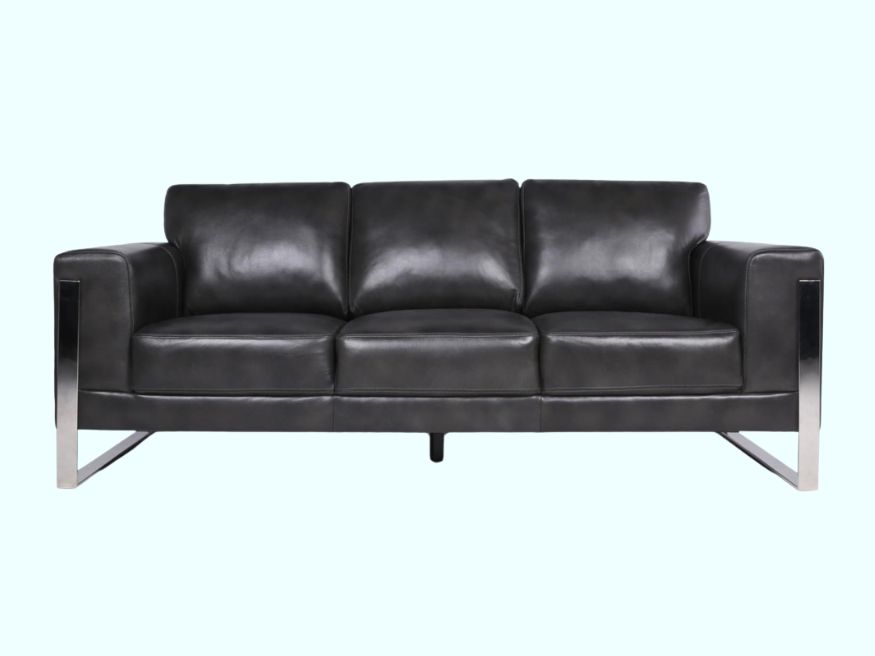
#2 – Loveseats
Loveseats create visual spaciousness by occupying less physical footprint than any other traditional seating option. These two-person sofas typically measure 52 to 64 inches in length, leaving more open floor space visible around them. When you can see more floor and wall area, your brain perceives the room as larger, even though the actual square footage hasn’t changed.
The shorter length creates additional benefits beyond visual perception. You gain flexibility in furniture placement, with options to position the loveseat at angles, float it away from walls, or pair it with other pieces to create conversational groupings. This flexibility lets you define zones in small spaces without the commitment of a full-size sofa.
The main consideration with loveseats is seating capacity. A loveseat comfortably accommodates two people, which works best for couples or individuals who entertain occasionally. If you regularly host gatherings or have a larger family, you’ll need to supplement with additional seating like accent chairs or ottomans.
Spaces Where Loveseats Work Best:
- Studio apartments: Where every inch counts and you need to clearly define different zones without blocking sight lines across the space.
- Secondary seating areas: In bedrooms, home offices, or reading nooks where you want comfortable seating without furniture that dominates the room.
- Pairing situations: When you want to create a conversational grouping using two smaller pieces rather than one large sectional.
- Narrow rooms: In long, narrow living rooms, a standard sofa would block the flow and make the space feel corridor-like.
Shop Hudson’s Furniture’s top Loveseats designs:
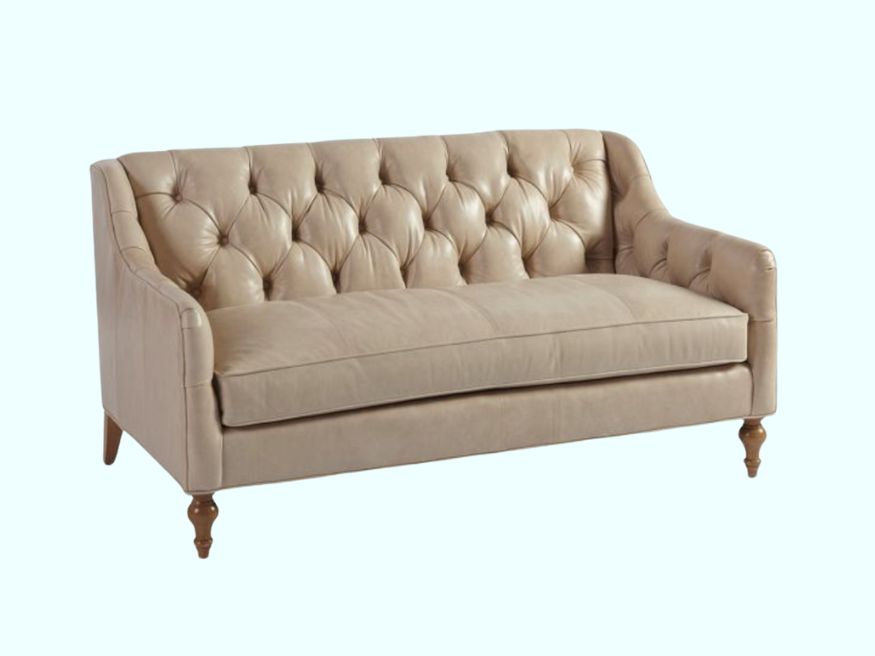
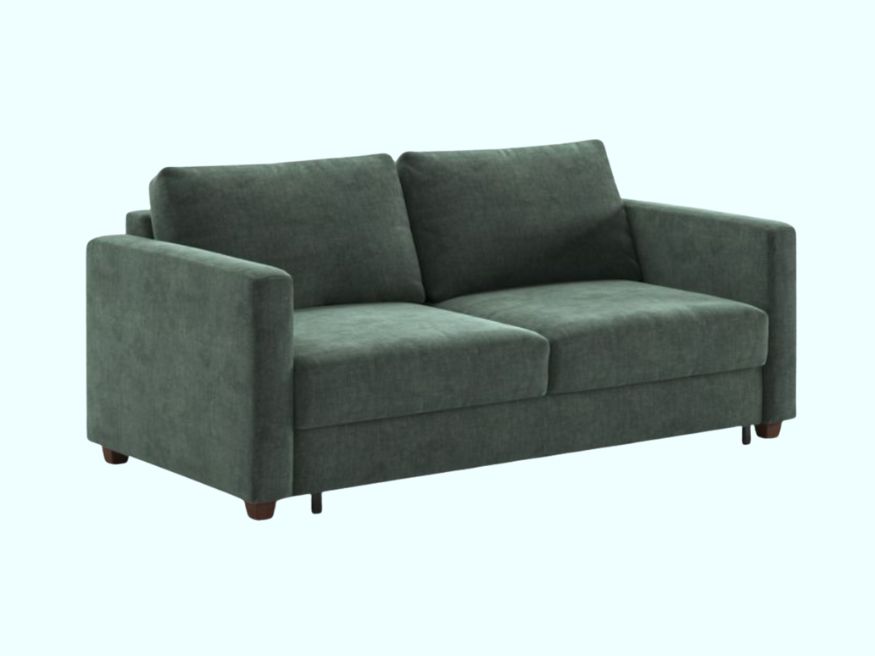
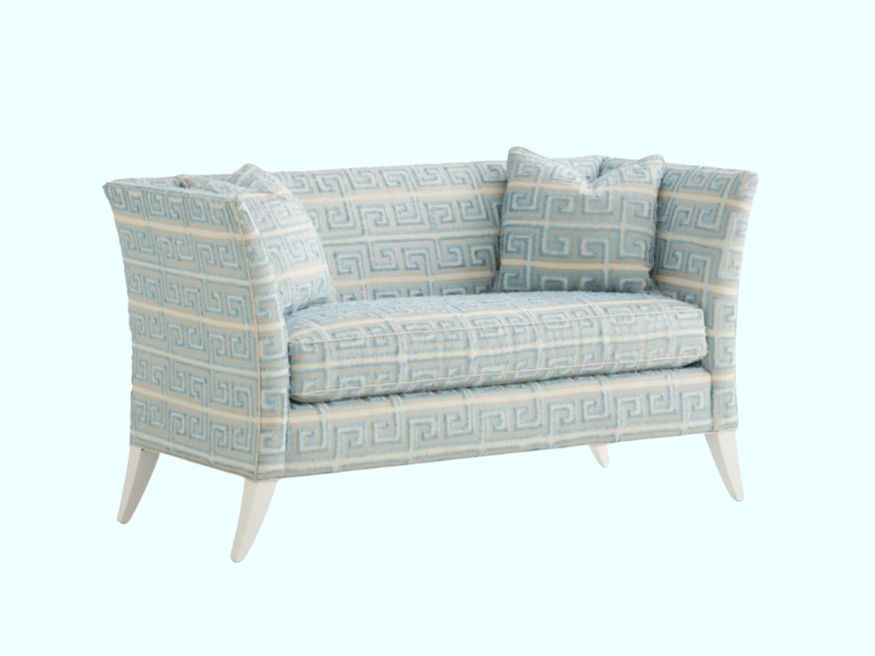
#3 – Armless & Slim-Arm Sofas
Armless and slim-arm sofas convert arm space into usable seating space. This can be done by either eliminating the arms altogether or by selecting modern slim-armed designs, like a track arm, that balance seating efficiency with practical functionality. The trade-off with fully armless designs comes in versatility and comfort. Without arms to define the ends, armless sofas work best against walls or in configurations where other furniture frames the seating area. They’re less suitable for floating layouts where you want clear visual boundaries.
When to Choose Armless or Slim-Arm Sofas
- Against walls: Armless designs work beautifully when positioned against walls where the architecture provides visual definition.
- Between furniture: Use armless sofas as connecting pieces between sections or when flanked by bookcases, tables, or other furniture that provides structure.
- Maximizing seating: Choose these styles when you absolutely need to squeeze every possible inch of seating from your available space.
- Modern aesthetics: Slim-arm and armless designs naturally suit contemporary and minimalist interiors where clean lines are essential.
Shop Hudson’s Furniture’s top armless & slim-arm sofa designs:
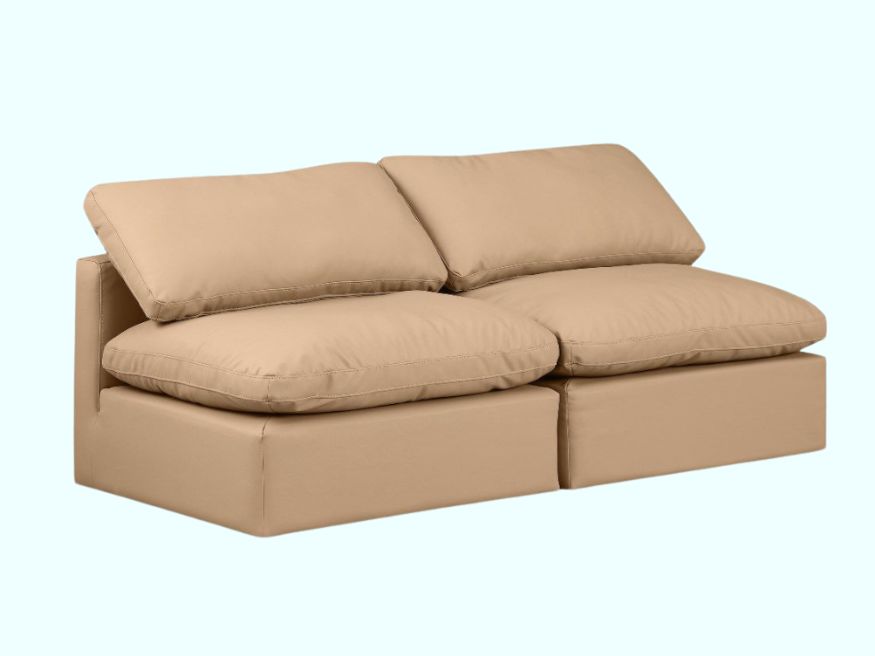


#4 – Modular Sofa Systems
Modular sofas serve multiple purposes through adaptability. These systems consist of individual sections that connect together, allowing you to create custom configurations that fit your exact room dimensions. The functionality benefits come from how modular systems allow you to build a sofa exactly the way your space allows. Many systems include specialty pieces like corner wedges, armless chairs, and chaise modules that let you customize your layout. This means you’re not locked into a manufacturer’s preset dimensions that might waste inches or force awkward gaps in your layout.
Shop Hudson’s Furniture’s top modular sofa designs:
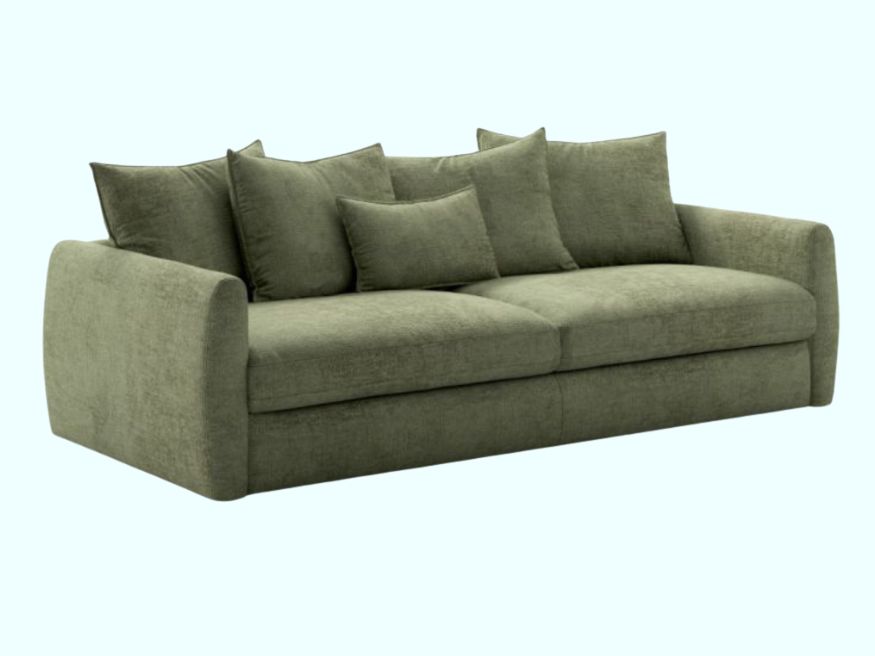

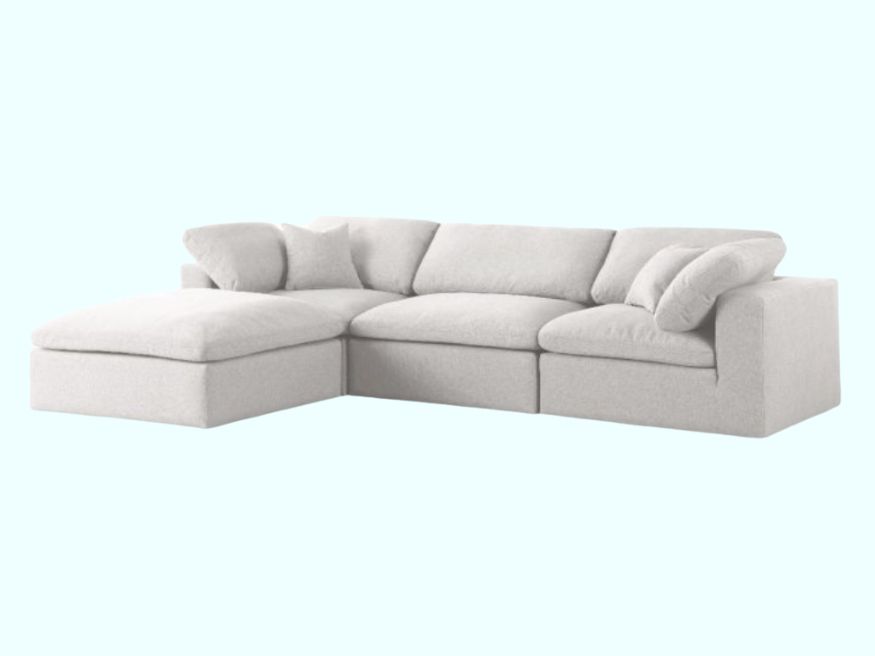
#5 – Compact Sectionals
Compact sectionals maximize seating efficiency by using corner space that standard sofas leave empty. Corner pieces turn dead zones into functional seating, and chaise extensions replace the need for separate ottomans or lounge chairs. Interior design experts at The Spruce note that sectionals with a chaise on one end can replace the need for both a sofa and a separate lounging chair, consolidating two furniture pieces into one efficient layout.
The key is choosing a design specifically scaled for smaller rooms rather than selecting the smallest option from a full-size sectional line. Compact sectionals work well in square living rooms or spaces with awkward angles where a standard sofa placement creates wasted floor space.
Features to Look For in Compact Sectionals:
- Reversible chaise: Allows you to configure the sectional for either left or right orientation, giving you flexibility if you move or want to refresh your layout.
- Modular construction: Individual pieces that connect together let you reconfigure or downsize your sectional if your needs change.
- Streamlined arms: Track arms or slim designs maximize seating width without adding unnecessary bulk at the ends.
- Scaled proportions: Overall dimensions under 90 inches on the longest side, with depths no more than 36 inches, including the chaise extension.
Shop Hudson’s Furniture’s top compact sectional sofa designs:


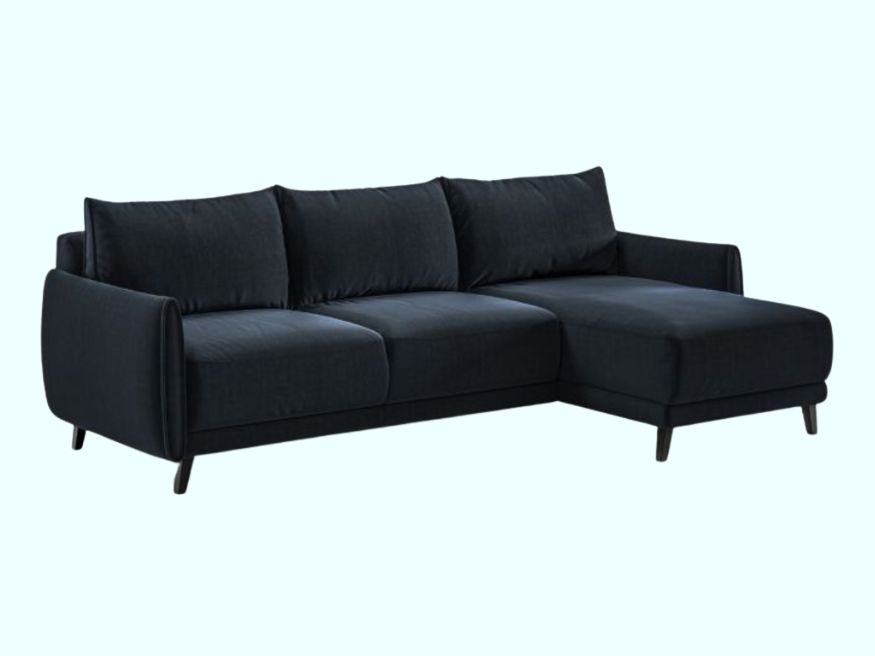
#6 – English Roll Arm Sofas
English roll arm sofas maximize seating efficiency while maintaining classic elegance. The tight, cylindrical arm shape that curves gently outward saves space compared to bulky pillow-top or panel arm designs. As an added benefit, this style of armrest seating efficiency doesn’t come at the expense of comfort. The gentle roll provides a comfortable spot to rest your head or prop your arm while reading, and the classic shape works in both traditional and transitional spaces.
This style works well in small rooms with traditional or transitional decor, where you want sophisticated styling without the bulk of full traditional furniture. The tailored look feels polished and intentional, giving you the classic aesthetic you want in a more space-conscious package.
Shop Hudson’s Furniture’s top English rolled arm sofa designs:

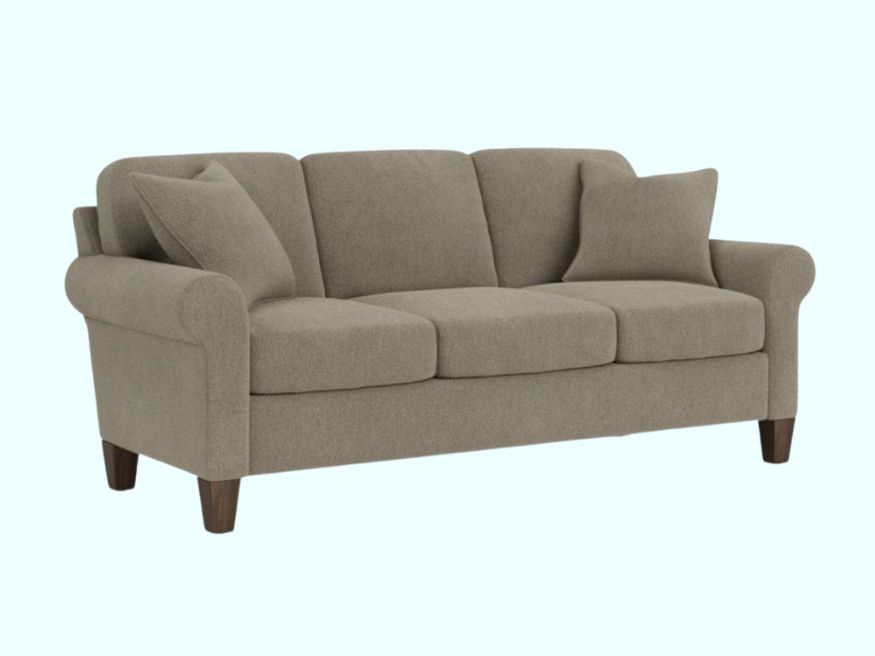
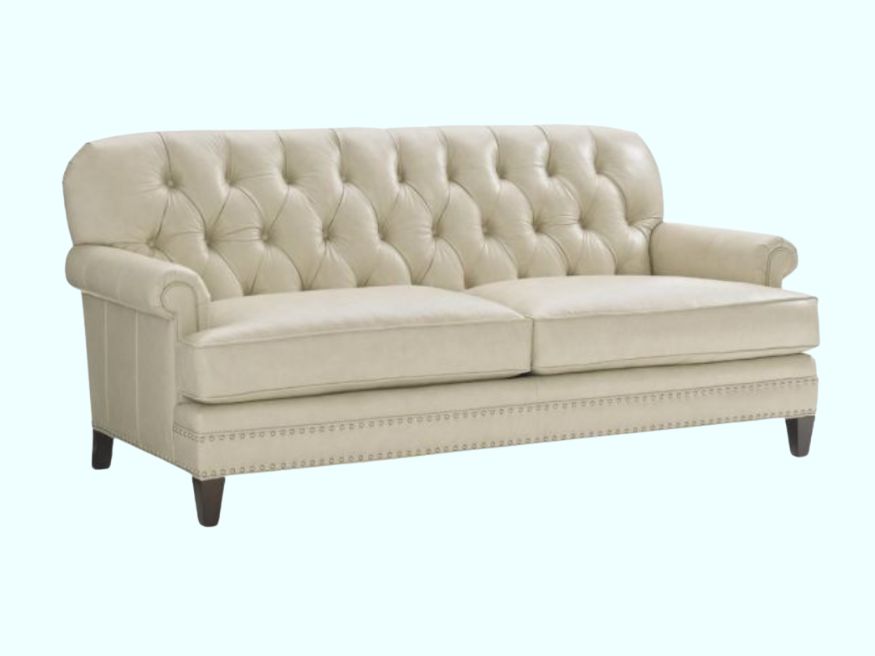
#7 – Sleeper Sofas
Sleeper sofas eliminate the need for both a living room sofa and a separate guest bed. For small apartments or homes without dedicated guest rooms, a quality sleeper sofa provides essential dual functionality. This consolidation reduces your total furniture footprint while increasing what you can do with your space.
Modern sleeper sofas have evolved far beyond their clunky predecessors, offering genuine comfort for both sitting and sleeping in compact profiles. Memory foam and air mattresses create better sleeping surfaces than traditional innerspring mechanisms while maintaining slimmer daytime profiles. The key is choosing a mattress size that matches your room’s actual usable space. Twin and full sleepers work better in compact rooms because you can open them without rearranging your entire furniture layout every time guests visit.
Features to Prioritize in Small-Space Sleepers:
- Slim mechanisms: Look for designs with memory foam or air mattresses that keep the closed depth under 36 inches.
- Easy operation: One-motion mechanisms that don’t require removing cushions or heavy lifting make frequent use more practical.
- Storage space: Some sleeper sofas include storage compartments for bedding, eliminating the need for a separate linen closet.
- Quality mattress: If you’ll use the sleeper regularly, invest in a quality mattress rather than choosing solely based on the most compact mechanism.
Shop Hudson’s Furniture’s top sleeper sofa designs:

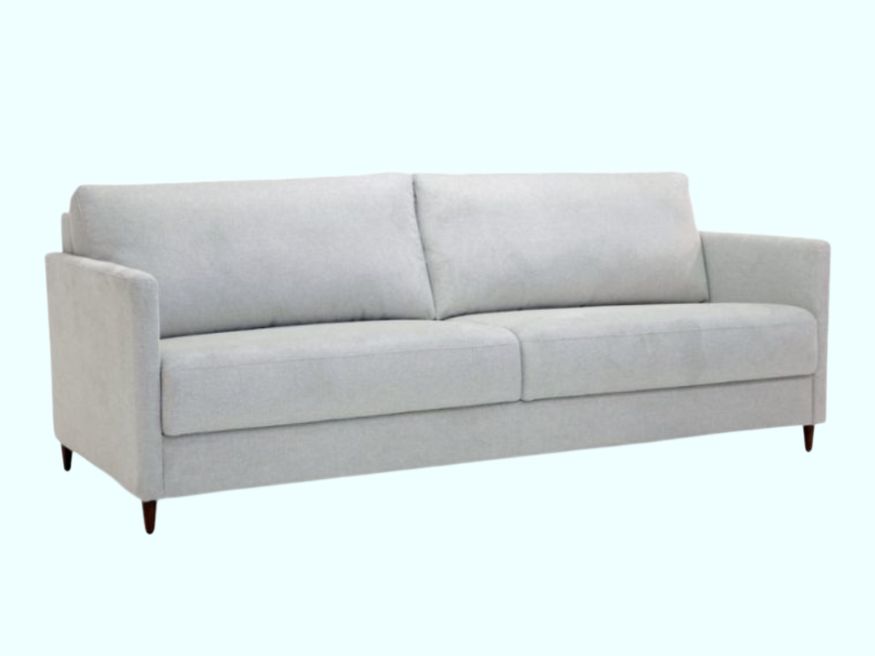
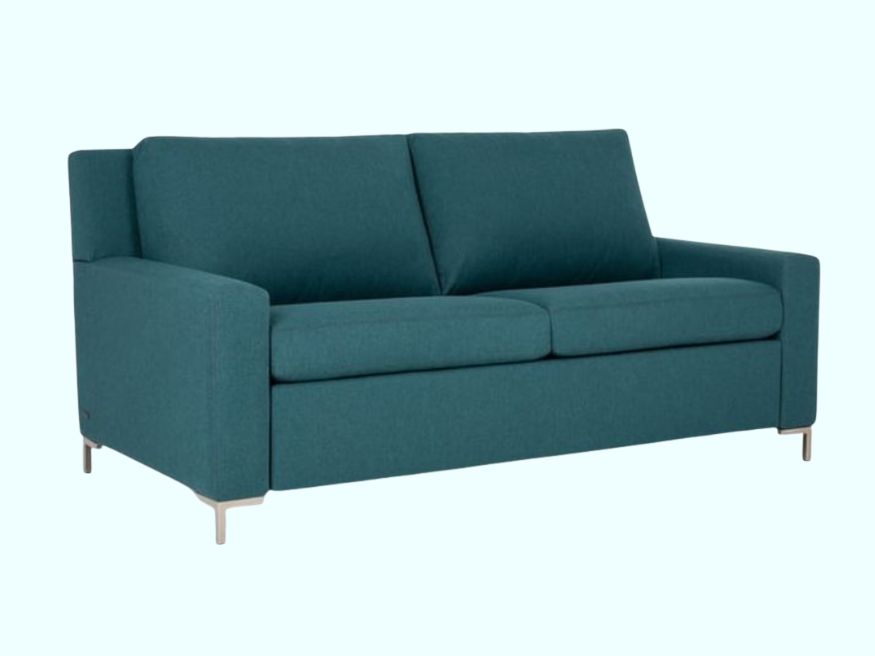
What is An “Apartment Sofa?”
Apartment sofas are scaled specifically for compact living spaces, typically measuring between 68 and 80 inches in length compared to traditional sofas that span 84 to 96 inches. These pieces feature proportionally scaled depths and heights as well. Where a standard sofa might be 38 to 40 inches deep, apartment sofas typically measure 32 to 36 inches. The benefits of an apartment sofa aren’t confined to a shorter length. The shallower depth leaves more room for coffee tables and walking space while still providing comfortable seating.
But keep in mind, while apartment sofas are constructed with smaller dimensions in mind, the label doesn’t guarantee the piece will work in your specific space or meet your needs. The real answer is understanding your actual room dimensions and how different design features affect your space. What matters is choosing specific measurements and style characteristics that work for your layout, not shopping by category labels.
Measurements to Check Before Buying a Sofa
Once you’ve determined the style and features of the sofa you like best, you’ll want to shop around, ensuring as you do so that your sofa dimensions fit within your allotted space. To do this, start by measuring your space carefully, noting the length of your longest wall, the depth you have available, and the placement of doors, windows, and other architectural features. When evaluating specific sofas, check these critical dimensions:
- Sofa length: Measures the total distance from the outside of one armrest to the outside of the other armrest
- Seating width: Refers to the usable cushion space from inside one arm to inside the other arm
- Sofa depth: Measures from the very back of the sofa to the front edge of the seat cushion
- Seat depth: Measures from the front edge of the seat cushion to where your back meets the back cushion
- Sofa height: Refers to the distance from the floor to the very top of the back cushions
- Seith height: Measures from the floor to the top of the seat cushion where you actually sit
- Armrest height: Measures from the floor to the top of the sofa’s arms
For detailed instructions on measuring your space and calculating the perfect sofa proportions, read our Couch Size Guide: How to Pick the Right Size Sofa.
You’ll also want to keep in mind how you actually use your living room and what your daily patterns demand from your sofa. Consider the following questions and keep your answers in mind as you shop:
- How many people need to sit comfortably at once?
- Will this sofa accommodate overnight guests?
- Do you entertain frequently?
- How do you spend evenings on your sofa?
- How much other furniture do you need to fit in the room?
- What’s your room’s traffic pattern?
- How long do you plan to keep this sofa?
Remember, your sofa is an investment that deserves proper care. Learn how to protect and maintain your furniture with our Furniture Care 101: How to Maintain and Protect Your Investment guide.

Creating a comfortable, stylish living room in a compact space is absolutely achievable with the right sofa. Focus on proportions, style details, and how you actually use your space rather than simply choosing the smallest option available. Your perfect small-space sofa is waiting, and with these insights, you’re ready to find it.
Ready to explore sofa options perfect for your space? Visit Hudson’s Furniture to discover our collection of thoughtfully designed sofas in every style and size. Our design team is here to help you find the perfect piece that transforms your compact living room into a space you love.
FAQs
What sofa styles work best in small living rooms?
Low-profile and leggy sofas, loveseats, slim-arm styles, compact sectionals, and modular designs all work well because they offer comfort without overwhelming the room.
Which arm styles take up the least space on a sofa?
Track arms, slim contemporary arms, and English roll arms have narrow profiles that save several inches compared to bulky rolled or pillow-top arms.
What color sofa makes a small living room feel larger?
Light neutrals such as beige, gray, cream, and soft blues reflect more light, create visual continuity, and make the room feel more expansive.
What measurements should I check before buying a sofa for a small space?
Measure overall length, depth, seat depth, back height, and arm height, and verify that the sofa can pass through doorways, hallways, and stairwells.
How do I maximize seating without overcrowding a small living room?
Choose slim-arm or armless sofas, use corner-friendly sectionals, and keep pathways clear to create a functional seating arrangement without clutter.
What type of sectional layout works best in compact living rooms?
A small L-shaped sectional with a reversible chaise maximizes seating, fits into corners, and adapts easily if your layout changes.



